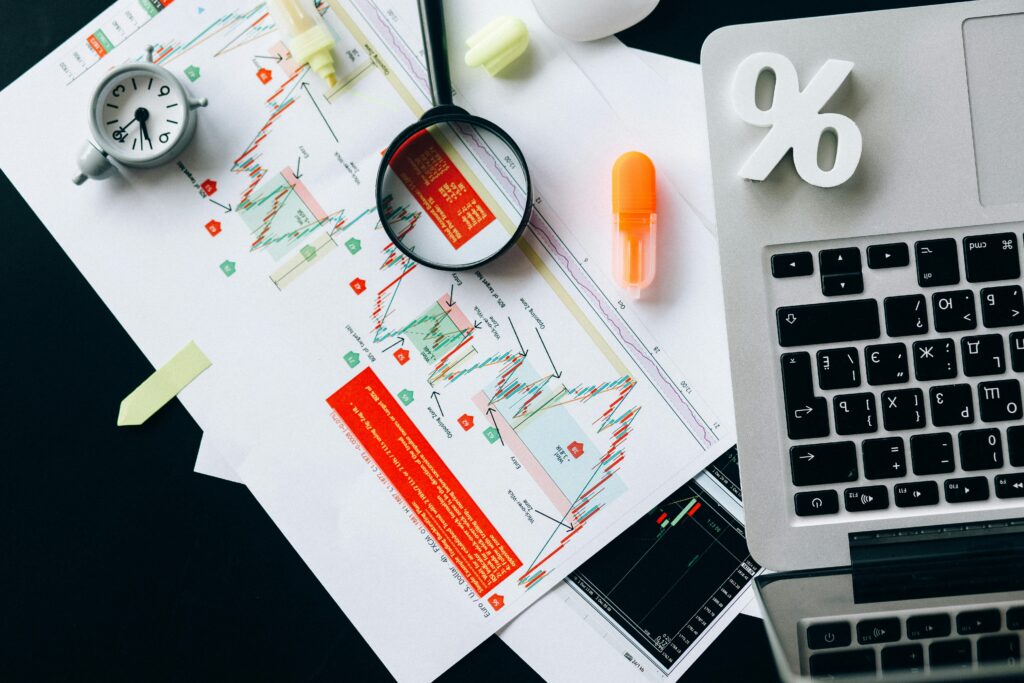
Table of Contents
I compare Trading indicators to a compass which trader uses in midst of stormy waters to guide them through the storm. Regardless of your level, being yet a novice or are an experienced trader, it is helpful to get more familiar with indicators which will help to make a good output in stock market. Well, let’s start with the background information you’re going to need to know more detailed info!
What Are Trading Indicators?
Definition and Purpose
Traders’ indicators are signals employed in the examination of price, trend, and the market. It utilizes simple mathematical calculations on prices, volume or open interest, making available intelligence to the trader.
Why They are Critical to the Trader
These signposts make the complexity of market data more manageable, hint at opportunities and obscure threat. They play second foremost by helping traders make correct decisions.
Types of Trading Indicators
Trend Indicators
Trend indicators are used to enable the trend of the market to be determined.
Moving Averages
An average of the prices collected over a period of time that helps to level the actual data to even out short-term volatility.
MACD (Moving Average Convergence Divergence).
Incorporates two exponential moving averages that help indicate momentum and properly direction.
Momentum Indicators
Technical indicators that deal with momentum reveal the rate of change of prices.
Relative Strength Index (RSI)
Quantitative indicator that presents the overbought or oversold state of an asset in a scale from 0 to 100.
Stochastic Oscillator
Closely relates a security’s closing price to its price level or band for a specified period of time.
Volatility Indicators
These indicative refer to the extent of price variability .
Bollinger Bands
Forms bands around a moving average to show fluctuation.
Average True Range (ATR)
Calculates the mean of the variations between the highest and the lowest price levels.
Volume Indicators
Volume pointers give strength to the flow of a particular market that has been formed.
On-Balance Volume (OBV)
Keeps record of the daily buying and selling pressures.
Chaikin Money Flow
Calculated in terms of the amount of money passed through measurement period to determine its fluctuations.
How To use Trading Indicators
Combining Indicators
Employ multiple indicators to confirm a given pattern, for example using an indicator that defines trends joined with an indicator that defines momentum.
Avoiding Common Mistakes
If you try to include a high number of indicators in the chart, you may confuse yourself when it comes to interpreting results. Keep it simple!
The Basic Statistical Tools Used in Identifying Indicators for New Entrants
Simple Moving Averages
A simple tool to use for analysis in order to recognize trends.
RSI
Perfect for identifying signs when an instrument has been bought or sold to an unhealthy level.
Advanced Trading Indicators
Ichimoku Cloud
This double use indicator helps one to identify the level of support, resistance, and even the trend direction.
Fibonacci Retracement
Used to determine ratios that point to potential levels of reversal.
Custom Indicators: Creating Your Own Edge
Customization tools and Platforms
Examples include TradingView.com which provides the trader with an opportunity to develop their custom symbols.
Checking & Enhancing Specific Icons
Backtesting means that your custom tools have been tested on historical data, and forward-testing means that they are tested in real-time markets.
Advantages and Disadvantage of Indicators
Advantages
- Simplifies decision-making.
- Highlights opportunities.
- Reduces emotional trading.
Limitations
- Not always accurate.
- Sometimes it opens up the possibility can lag behind real-time data.
- Examples of the Employment of Indicators
A Trend-Following Strategy
Long-term bullish trends of using moving averages for trend following.
A Momentum-Based Strategy
Applying relative strength index to take advantage of over bullish or over bearish market.
Strategies on how to use Indicators in Trading Correctly
Start Simple and Build Up
It is advised that one should try to learn one or two indicators before moving on to another.
Learn From Mistakes
Every trading mistake is an opportunity to optimize the operation of the market.
Conclusion
Having discussed their importance, it is necessity for you to understand that indicators are useful signifies that can improve your trading process. Regardless of whether you are watching trends, such as momentum, or when it comes to the unpredictability of the market, these tools offer a much better perspective. Effective tomorrow, begin by honing these tools with baby steps, embrace progressive education, and then you will discover the full potential of these boons.
FAQs
Which trading indicator is the most sought after?
The moving average is most popular because it is straightforward to calculate and is highly effective.
Can I trade without indicators?
Indicators are useful for making decisions more precise and accurate, yes, but indicators are necessary in order to heighten confidence in decisions.
What number of indicators is it recommended to employ simultaneously?
This is because two to three complementary indicators are usually enough.
Can free trading indicators be trusted?
It is possible to find many useful free indicators as long as they are purchased on reliable platforms.
A common question that arises within performance measurement is what constitutes a leading indicator and what constitutes a lagging indicator?
Leading indicators explain how the value will change in the future, while lagging indicators just prove how the value has changed in the past.
